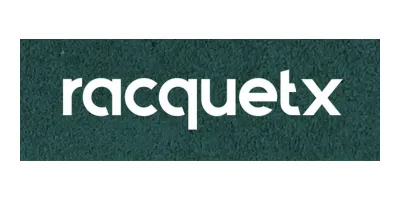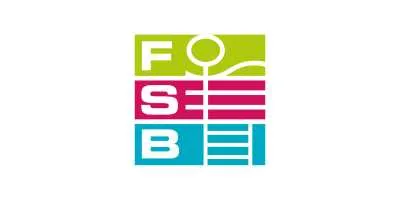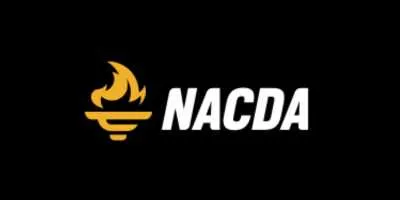Home » Artificial Turf Field » Artificial Turf Infill: Material Options

When installing an artificial turf field, choosing the right infill material is crucial to the field’s performance, safety, and longevity. Infill serves to support the turf fibers, cushion impacts, and improve overall playability. This guide will explore the various infill options available, discussing their properties, costs, environmental impact, and suitability for different applications.
Try our Artificial Turf Field Cost Calculator to get a tailored cost estimate in just minutes.
Types of Infill Materials
SBR (Styrene Butadiene Rubber):
- Commonly known as crumb rubber, SBR is a popular choice due to its affordability and durability.
- It provides good shock absorption and is known for its resilience, but it has faced scrutiny over environmental and health concerns, as it is derived from recycled tires.
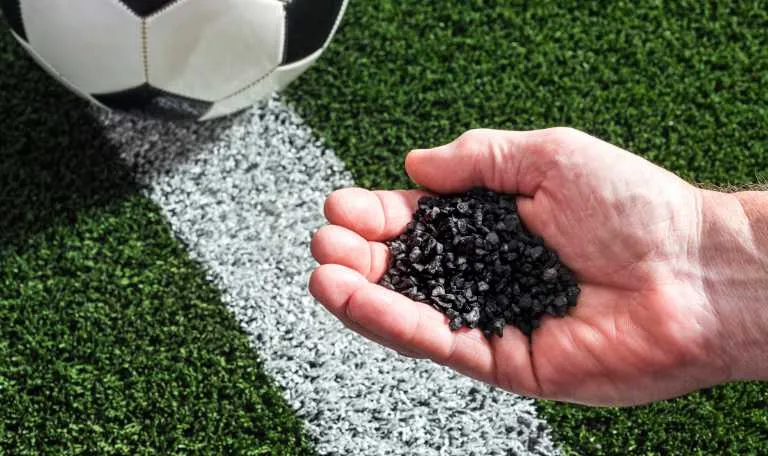
EPDM (Ethylene Propylene Diene Monomer):
- A synthetic rubber infill, EPDM is prized for its consistent performance across various temperatures.
- It offers superior UV resistance and a softer feel compared to SBR, but is more expensive.
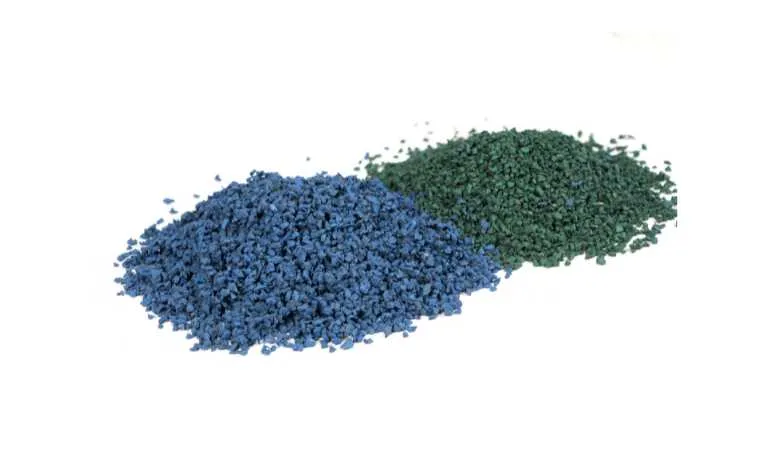
TPE (Thermoplastic Elastomer):
- TPE is a high-quality, durable option that is increasingly popular due to its ability to be recycled.
- It provides a high level of comfort and shock absorption, making it suitable for high-impact sports fields.

Sand and Silica Infill:
- These are typically used as base layers or combined with other infills to provide stability.
- They have low cushioning properties and are more susceptible to compaction over time.
Organic Options (Cork, Coconut Husk):
- Cork and coconut husk blends are environmentally friendly alternatives that are biodegradable and non-toxic.
- They are excellent for reducing surface temperatures and are often used in regions with high heat, though they may require more maintenance in humid conditions.

Comparative Analysis of Infill Materials
Artificial turf infill materials have unique effects on playability, safety, and environmental impact. SBR and TPE, for instance, offer reliable shock absorption, making them ideal for contact sports where minimizing injuries is essential. Organic infills like cork, while not as resilient, are well-suited for recreational or non-contact sports fields, providing a softer feel underfoot.
Each material also differs in its environmental footprint: organic infills are eco-friendly but may require additional maintenance in humid climates to prevent mold, while SBR—although cost-effective—can contribute to microplastic pollution.
Regarding health and safety, SBR has faced concerns about potential chemical exposure, which has led some users to explore safer alternatives. Organic infills are generally considered safer and pose fewer health risks, though they may require treatments to resist mold in certain conditions. TPE is recyclable and offers a middle ground with a reduced environmental impact and good performance metrics, making it a versatile option for facilities balancing performance needs with environmental considerations.
Cost Implications
The cost of infill varies widely based on the type:
- SBR: Generally the least expensive, making it a popular choice for budget-conscious projects.
- EPDM and TPE: These synthetic options are more costly but offer long-term durability, potentially reducing maintenance costs.
- Organic Infill: Typically more expensive upfront, but lower maintenance costs can offset this over time, especially in cooler climates.
Climate Considerations
The local climate is a critical factor in selecting an infill:
- Hot Climates: Organic infills like cork perform well as they do not retain heat as much as SBR or EPDM.
- Cold Climates: SBR and TPE maintain their properties in cold weather, offering consistent performance and requiring less upkeep than organic infills, which can freeze.

Application-Specific Recommendations
Educational Institutions:
- Focus on safe, budget-friendly options like SBR or a cork blend for a softer surface.
- Environmental considerations are key due to children’s prolonged exposure to the field.
Municipalities and Public Parks:
- Durability and maintenance are crucial due to high usage, making EPDM and TPE good choices.
- Public perception and environmental impact may influence municipalities to choose organic options where possible.
Professional and Semi-Professional Sports Facilities:
- High-performance materials like TPE or EPDM are often preferred for superior shock absorption and resilience.
- Consider temperature management, as these fields often experience heavy usage and need to remain comfortable for athletes.
Promising Developments in Turf Infill Materials
Infill granulates for artificial turf field systems have evolved significantly, with EPDM and SBR remaining popular for their ability to mimic natural grass properties effectively. However, concerns about microplastic pollution from rubber infills have driven the industry toward eco-friendlier solutions.
Microplastic filters, which can capture up to 95% of these particles, present a viable option for reducing environmental impact without replacing current systems. Additionally, alternatives like cork and non-infill turf designs are being explored, though cork’s limited availability and susceptibility to wind and rain pose challenges for widespread use.
Manufacturers are developing solutions to maintain playability while minimizing ecological harm. Non-infill fields and cork infill present promising options, especially for sports like football, soccer, and field hockey, though these technologies are still emerging. The industry is actively innovating to balance performance with sustainability.
Conclusion
Choosing the right infill involves balancing cost, environmental impact, and performance needs. For budget-conscious projects, SBR is a reliable and affordable choice. For those prioritizing sustainability, organic options like cork are ideal, though they may come with higher upfront costs. EPDM and TPE offer durable, high-quality alternatives suited to both moderate and intense sports environments, with an additional advantage in terms of recyclability.
By understanding the unique benefits and drawbacks of each infill type, project owners can make informed decisions that meet both their budget and performance needs, ultimately ensuring that their artificial turf fields offer a safe, durable, and environmentally conscious playing surface.



